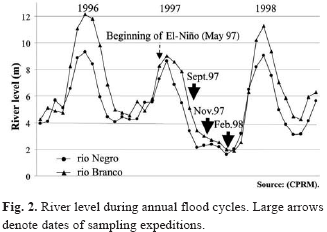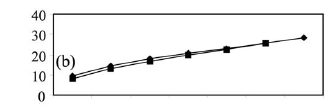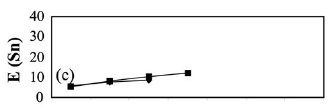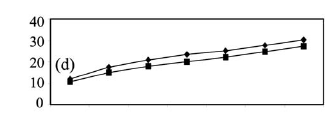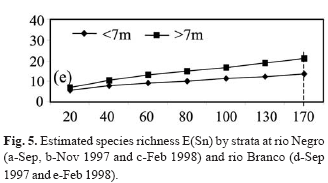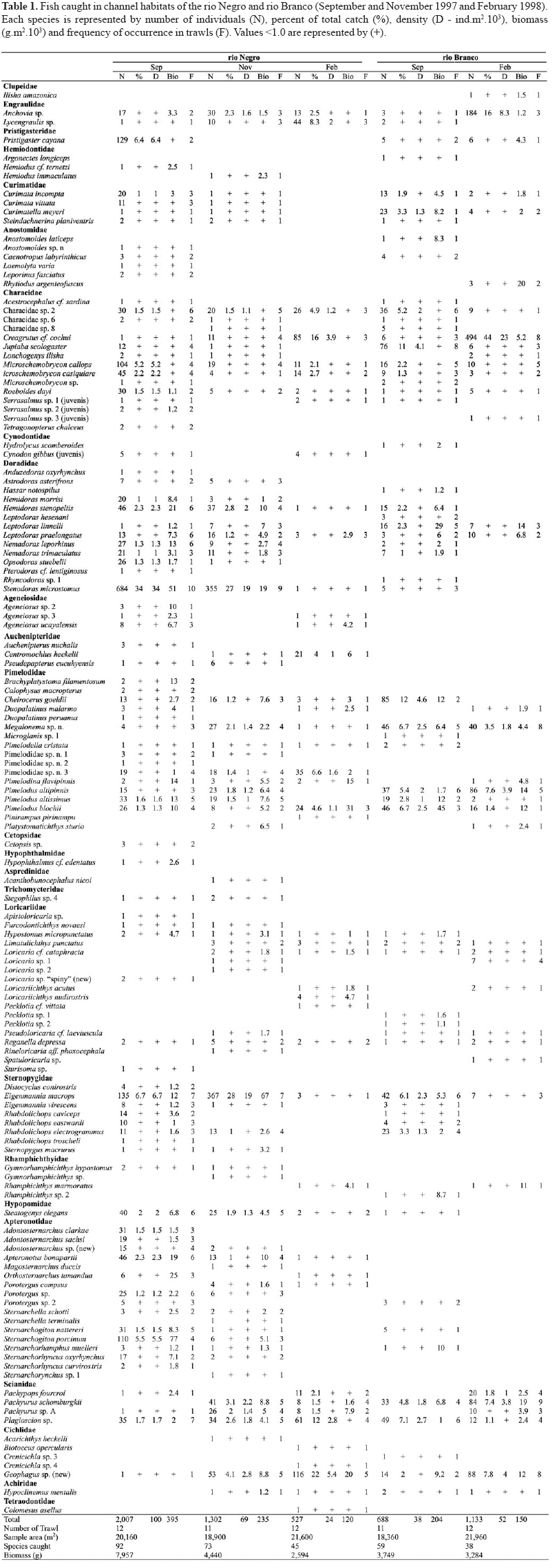Spatial and temporal variation in the benthic fish composition, species richness, density and biomass were studied in the lower rio Branco and its confluence with the rio Negro during the 1997-98 dry season (September to February). Samples were taken with a 5.28 m (16-ft) otter trawl in three expeditions and at two depth strata (<7m and >7m). Five to seven trawl hauls were made randomly in each sample site per expedition. A total of 58 trawls yielded 134 species, 5,657 individuals and 22 kg total biomass. Fishes were distributed in 25 families and seven orders. Siluriformes was the most specious with 59 species, followed by Gymnotiformes (30), Characiformes (30), Perciformes (9), Clupeiformes (4), Pleuronectiformes (1) and Tetraodontiformes (1). The variation on composition, richness of species, density and biomass occurred during the dry season, from September 1997 to February 1998. Differences between depth strata were observed. Siluriformes and Gymnotiformes were more abundant at the beginning of the dry season (September) but diminished toward the end of dry season (February), whereas the Perciformes and Characiformes (mainly post-larvae and juveniles) became more abundant at the end of the dry season. The diminishing density of benthic fish communities during this extremely dry season may have been caused by predation or migration.
Main channel river; Otter trawl; rio Branco; El-Niño phenomenon


